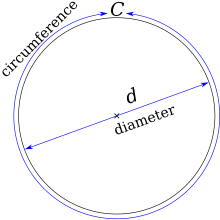
What are numbers? Are some numbers more real than others? More rational?
Just … better?
No, of course not! You reply. It is absurd to make a
moral or quasi-moral judgment about or classification of numbers. Numbers are
just … numbers. Numbers are simply sums
or aggregates. Each is a very short way of saying something about a collection
of things, events, or people, as in the perfectly comprehensible sentence, "a number of people were hurt in the accident." There is no need to make heavy water out of this.
But then, why do categories of numbers have the
strange and sometimes stigmatizing names they do? Some numbers are called “irrational,”
in contrast to the “rational.” Others are called “imaginary,” in contrast to
the “real.” What is irrational about the former or unreal about the latter?
It is a tricky question. But it is worth unravelling
this knot. It is worth so even if you took no pleasure in mathematics at
school, or since, and even if you are content in an occupation that doesn’t require mathematical
skill. It is worthwhile because, as I hope my next book will show, nothing less than freedom
is at stake in getting this right.
There has of late been a great and important advance
in the understanding of numbers. It is the fractal revolution, and it came about with the essential assistance of those oddly named ducks, the imaginary numbers. This advance changes our understanding of
reality, and will in the course of time, I am confident, change our understanding
of our relations with one another as well.
Let’s launch ourselves into this distinction between
rational and irrational numbers.
A rational number is any number that can be
represented as a simple fraction. The number 1 is rational. It can be represented
readily as 1/1, or 2/2, or 3/3 or so forth. But the ratio of a circle’s circumference
to its diameter, pi, also traditionally represented
as π,
is not a rational number. In fractional terms, it is approximately 22/7. But … not quite. Indeed it
is ever not quite. It slips away from you whenever you try to pin it down.
If we represent numbers in decimal rather than
fractional form we can express the strangeness of pi, its irrationality, in a
different way....
good,,, i want to share about irrational number
ReplyDeletehttp://www.math-worksheets.co.uk/048-tmd-what-are-irrational-numbers/